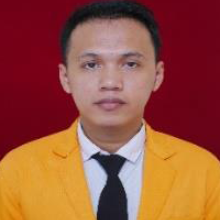International Journal of Modern Education and Computer Science (IJMECS)
IJMECS Vol. 17, No. 4, 8 Aug. 2025
Cover page and Table of Contents: PDF (size: 1885KB)
Utilizing Machine Learning-Based Decision-Making to Align Higher Education Curriculum with Industry Requirements
PDF (1885KB), PP.1-25
Views: 0 Downloads: 0
Author(s)
Index Terms
Curriculum evaluation, machine learning, Lq-ROFNs, MCDM, SVM, SSO, higher education planning
Abstract
The accelerating pace of industrial transformation necessitates a strategic reconfiguration of higher education curriculum to ensure alignment with dynamic labour market demands. This study introduces a hybrid decision-making framework that integrates Machine Learning with Multi-Criteria Decision Making techniques to evaluate and classify the readiness and relevance of academic programs. The methodological core includes the Step-wise Weight Assessment Ratio Analysis, Linguistic q-Rung Orthopair Fuzzy Numbers, and the Multi-Attributive Border Approximation Area Comparison method for criteria weighting, coupled with a classification model based on Support Vector Machine optimized using the Salp Swarm Optimization algorithm. The results demonstrate the framework's efficacy in identifying curriculum gaps and recommending adaptive enhancements, especially for programs categorized as “Needs Improvement” Beyond classification, the system facilitates strategic curriculum planning, fosters pedagogical innovation, and promotes industry-responsive learning pathways. This study highlights the transformative potential of machine learning in higher education, equipping students with the skills required to navigate an increasingly dynamic professional landscape, while offering actionable insights into instructional redesign, competency-based delivery, and industry-informed pedagogy. Future research will explore longitudinal impact assessment and broader stakeholder integration to enhance the framework’s scalability and contextual adaptability.
Cite This Paper
Muhammad Faisal, Titik Khawa Abd Rahman, Darniati Zainal, Husni Mubarak, Fadly Shabir, Nizirwan Anwar, Imam Asrowardi, "Utilizing Machine Learning-Based Decision-Making to Align Higher Education Curriculum with Industry Requirements", International Journal of Modern Education and Computer Science(IJMECS), Vol.17, No.4, pp. 1-25, 2025. DOI:10.5815/ijmecs.2025.04.01
Reference
[1]A. Strzelecki, “Students’ Acceptance of ChatGPT in Higher Education: An Extended Unified Theory of Acceptance and Use of Technology,” Innov. High. Educ., vol. 49, no. 2, pp. 223–245, Apr. 2024, doi: 10.1007/s10755-023-09686-1.
[2]E. W. Ziemba, E. W. Maruszewska, D. Grabara, and K. Renik, “Acceptance and Use of ChatGPT Among Accounting and Finance Higher Education Students,” in Lecture Notes in Networks and Systems, vol. 1079 LNNS, 2024, pp. 185–202.
[3]H. P. A. Tjahyaningtijas et al., “Machine learning on academic education: Bibliometric studies,” E3S Web Conf., vol. 450, p. 02010, Nov. 2023, doi: 10.1051/e3sconf/202345002010.
[4]C. Yang, F.-K. Chiang, Q. Cheng, and J. Ji, “Machine Learning-Based Student Modeling Methodology for Intelligent Tutoring Systems,” J. Educ. Comput. Res., vol. 59, no. 6, pp. 1015–1035, Oct. 2021, doi: 10.1177/0735633120986256.
[5]V. Nelyub, A. Glinscaya, V. Kukartsev, A. Borodulin, and D. Evsyukov, “Machine learning to identify key success indicators,” E3S Web Conf., vol. 431, 2023, doi: 10.1051/e3sconf/202343105014.
[6]M. Nauman, N. Akhtar, A. Alhudhaif, and A. Alothaim, “Guaranteeing Correctness of Machine Learning Based Decision Making at Higher Educational Institutions,” IEEE Access, vol. 9, pp. 92864–92880, 2021, doi: 10.1109/ACCESS.2021.3088901.
[7]E. M. Onyema et al., “Prospects and Challenges of Using Machine Learning for Academic Forecasting,” Comput. Intell. Neurosci., vol. 2022, pp. 1–7, Jun. 2022, doi: 10.1155/2022/5624475.
[8]B. Yang, “An Empirical Study on the Application of Machine Learning for Higher Education and Social Service,” J. Glob. Inf. Manag., vol. 30, no. 7, pp. 1–16, Feb. 2022, doi: 10.4018/JGIM.296723.
[9]A. R. Riyadi, T. Syaripudin, Kurniasih, A. Hendriani, C. Sutinah, and M. A. Sirojudin, “ChatGPT and Education: A Scopus Bibliometric Analysis,” 2024, pp. 264–272.
[10]R. A. Navarro, E. Barbarasa, and A. Thakkar, “Addressing workforce needs by disrupting traditional industry–higher education relations: The case of El Salvador,” Ind. High. Educ., vol. 33, no. 6, pp. 391–402, Dec. 2019, doi: 10.1177/0950422219875886.
[11]W. Holmes et al., “Ethics of AI in Education: Towards a Community-Wide Framework,” Int. J. Artif. Intell. Educ., vol. 32, no. 3, pp. 504–526, Sep. 2022, doi: 10.1007/s40593-021-00239-1.
[12]A. Tsamados et al., “The Ethics of Algorithms: Key Problems and Solutions,” in Philosophical Studies Series, vol. 144, 2021, pp. 97–123.
[13]S. Masrom, R. A. Rahman, N. Baharun, S. R. S. Rohani, and A. S. A. Rahman, “Machine learning with task-technology fit theory factors for predicting students’ adoption in video-based learning,” Bull. Electr. Eng. Informatics, vol. 12, no. 3, pp. 1666–1673, Jun. 2023, doi: 10.11591/eei.v12i3.5037.
[14]L. Chen, P. Chen, and Z. Lin, “Artificial Intelligence in Education: A Review,” IEEE Access, vol. 8, pp. 75264–75278, 2020, doi: 10.1109/ACCESS.2020.2988510.
[15]H. Cui, H. Zhang, L. Zhou, C. Yang, B. Li, and X. Zhao, “Fuzzy analytic hierarchy process with ordered pair of normalized real numbers,” Soft Comput., vol. 27, no. 17, pp. 12267–12288, Sep. 2023, doi: 10.1007/s00500-023-08232-7.
[16]H. Taherdoost, “Navigating the Ethical and Privacy Concerns of Big Data and Machine Learning in Decision Making,” Intell. Converg. Networks, vol. 4, no. 4, pp. 280–295, Dec. 2023, doi: 10.23919/ICN.2023.0023.
[17]A. Ahmed and D. Tolera, “Multi-Category Prediction of Students’ Academic Performance Using Machine Learning: For Students Joining Higher Educational Institutions in Ethiopia.” p. 6, Sep. 18, 2023, doi: 10.21203/rs.3.rs-3342736/v1.
[18]D.-C. Chang and S. Lin, “Using Azure Machine Learning to Detection of At-Risk Students,” IIAI Lett. Institutional Res., vol. 3, p. 89, 2023, doi: 10.52731/lir.v003.089.
[19]J. Daley and B. Baruah, “Leadership skills development among engineering students in Higher Education – an analysis of the Russell Group universities in the UK,” Eur. J. Eng. Educ., vol. 46, no. 4, pp. 528–556, Jul. 2021, doi: 10.1080/03043797.2020.1832049.
[20]J. Li and R. Wang, “Machine Learning Adoption in Educational Institutions: Role of Internet of Things and Digital Educational Platforms,” Sustainability, vol. 15, no. 5, p. 4000, Feb. 2023, doi: 10.3390/su15054000.
[21]B. S. Abunasser, M. R. J. AL-Hiealy, A. M. Barhoom, A. R. Almasri, and S. S. Abu-Naser, “Prediction of Instructor Performance using Machine and Deep Learning Techniques,” Int. J. Adv. Comput. Sci. Appl., vol. 13, no. 7, pp. 78–83, 2022, doi: 10.14569/IJACSA.2022.0130711.
[22]A. S. AL-Malaise AL-Ghamdi, M. Ragab, and M. Farouk S. Sabir, “Enhanced Artificial Intelligence-based Cybersecurity Intrusion Detection for Higher Education Institutions,” Comput. Mater. Contin., vol. 72, no. 2, pp. 2895–2907, 2022, doi: 10.32604/cmc.2022.026405.
[23]M. U. Hassan, S. Alaliyat, R. Sarwar, R. Nawaz, and I. A. Hameed, “Leveraging deep learning and big data to enhance computing curriculum for industry-relevant skills: A Norwegian case study,” Heliyon, vol. 9, no. 4, p. e15407, Apr. 2023, doi: 10.1016/j.heliyon.2023.e15407.
[24]Weifeng Wang, “Research on the Direction Optimization of Professional Cluster in Higher Education Institutions Based on Industrial Demand,” Int. J. New Dev. Educ., vol. 6, no. 1, 2024, doi: 10.25236/IJNDE.2024.060130.
[25]V. Garousi, G. Giray, E. Tuzun, C. Catal, and M. Felderer, “Closing the Gap Between Software Engineering Education and Industrial Needs,” IEEE Softw., vol. 37, no. 2, pp. 68–77, Mar. 2020, doi: 10.1109/MS.2018.2880823.
[26]V. Sukackė et al., “Towards Active Evidence-Based Learning in Engineering Education: A Systematic Literature Review of PBL, PjBL, and CBL,” Sustain., vol. 14, no. 21, p. 13955, Oct. 2022, doi: 10.3390/su142113955.
[27]A. Radchenko, G. Dyukareva, T. Afanasyeva, A. Kornitskaya, S. Yakubyan, and S. Karapandzha, “COMPETENCY-BASED APPROACH IN HIGHER EDUCATION: COMPETENCY-BASED MODEL OF THE ENGINEER FOR THE FOOD INDUSTRY,” ScienceRise, vol. 3, pp. 58–65, Jun. 2020, doi: 10.21303/2313-8416.2020.001344.
[28]M. Favaretto, E. De Clercq, A. Caplan, and B. S. Elger, “United in Big Data? Exploring scholars’ opinions on academic-industry partnership and the use of corporate data in digital behavioral research,” PLoS One, vol. 18, no. 1, p. e0280542, Jan. 2023, doi: 10.1371/journal.pone.0280542.
[29]B. Heriyadi, H. Yustisia, L. Asnur, V. Efrianova, and Y. Darma, “Analysis of Educational Curriculum Reconstruction Mining Vocational in Preparation of MBKM in Industry,” paperASIA, vol. 39, no. 6(b), pp. 116–123, Dec. 2023, doi: 10.59953/paperasia.v39i6(b).62.
[30]M. A. V Bermejo, M. Eynian, L. Malmsköld, and A. Scotti, “University–industry Collaboration in Curriculum Design and Delivery: A Model and Its Application in Manufacturing Engineering Courses,” Ind. High. Educ., vol. 36, no. 5, pp. 615–622, 2021, doi: 10.1177/09504222211064204.
[31]A. Oke and F. A. P. Fernandes, “Innovations in Teaching and Learning: Exploring the Perceptions of the Education Sector on the 4th Industrial Revolution (4IR),” J. Open Innov. Technol. Mark. Complex., vol. 6, no. 2, p. 31, 2020, doi: 10.3390/joitmc6020031.
[32]E. Pereira, “Constructive Alignment in a Graduate-Level Project Management Course: An Innovative Framework Using Large Language Models,” Int. J. Educ. Technol. High. Educ., vol. 21, no. 1, 2024, doi: 10.1186/s41239-024-00457-2.
[33]S. Marsudi, “Development of a Shipping Higher Education Curriculum That Is Responsive to the Challenges of Industry 4.0,” Marit. Park J. Marit. Technol. Soc., pp. 99–105, 2023, doi: 10.62012/mp.v2i3.28267.
[34]S. K. Soam et al., “Academia-Industry Linkages for Sustainable Innovation in Agriculture Higher Education in India,” Sustainability, vol. 15, no. 23, p. 16450, Nov. 2023, doi: 10.3390/su152316450.
[35]F. Tuğrul and M. Çitil, “A New Perspective on Evaluation System in Education With Intuitionistic Fuzzy Logic and Promethee Algorithm,” J. Univers. Math., 2021, doi: 10.33773/jum.796173.
[36]F. Ş. YÜKSEL, A. N. KAYADELEN, and F. ANTMEN, “A Systematic Literature Review on Multi-Criteria Decision Making in Higher Education,” Int. J. Assess. Tools Educ., vol. 10, no. 1, pp. 12–28, 2023, doi: 10.21449/ijate.1104005.
[37]M. Aziz and S. Surono, “Integration Model Of Occupational Certification Scheme Into Instructional Design To Close The Gap Of Learning Outcomes And Industry Needs,” J. Transnatl. Univers. Stud., vol. 3, no. 6, pp. 285–300, Jun. 2024, doi: 10.58631/jtus.v3i6.97.
[38]M. Faisal et al., “A Hybrid MOO, MCGDM, and Sentiment Analysis Methodologies for Enhancing Regional Expansion Planning: A Case Study Luwu - Indonesia,” Int. J. Math. Eng. Manag. Sci., vol. 10, no. 1, pp. 163–188, Feb. 2025, doi: 10.33889/IJMEMS.2025.10.1.010.
[39]E. Pereira, M. Vilas-Boas, and C. Rebelo, “University Curricula and Employability: The Stakeholders’ Views for a Future Agenda,” Ind. High. Educ., vol. 34, no. 5, pp. 321–329, 2020, doi: 10.1177/0950422220901676.
[40]P. Chikasha, K. Ramdass, N. Ndou, R. Maladzhi, and K. Mokgohloa, “Industrial Engineers of the Future – A Concept for a Profession That Is Evolving,” Adv. Sci. Technol. Eng. Syst. J., vol. 6, no. 4, pp. 72–79, 2021, doi: 10.25046/aj060409.
[41]M. N. Roma, “Redefining Assessment in Tourism and Hospitality Education,” Int. J. High. Educ., vol. 10, no. 4, p. 113, 2021, doi: 10.5430/ijhe.v10n4p113.
[42]Y. Chang and H.-L. Lien, “Mapping Course Sustainability by Embedding the SDGs Inventory Into the University Curriculum: A Case Study From National University of Kaohsiung in Taiwan,” Sustainability, vol. 12, no. 10, p. 4274, 2020, doi: 10.3390/su12104274.
[43]N. A. Appiah, “Higher Fashion Education in Perspective: The Effects of Work-Based Learning on Industry Requirements,” Br. J. Multidiscip. Adv. Stud., vol. 4, no. 3, pp. 137–150, 2023, doi: 10.37745/bjmas.2022.00206.
[44]H. Daniel, F. J. Nicholas, K. Chavali, and R. R. Gundala, “The Perceived Effects of Graduate Business Education on Personal and Professional Development: An Empirical Study,” Tem J., pp. 341–350, 2023, doi: 10.18421/tem121-43.
[45]S. Salehi, “A Fuzzy Multicriteria Decision Making Approach in Higher Education,” Int. J. Comput. Digit. Syst., vol. 14, no. 1, pp. 10159–10168, 2023, doi: 10.12785/ijcds/140189.
[46]A. Guryeva, “The Use of Virtual Reality Technology in Training Transport Industry Specialists,” SHS Web Conf., vol. 164, p. 46, 2023, doi: 10.1051/shsconf/202316400046.
[47]J. Williamson, K. Wardle, and H. Hasmi, “Developing WIL curriculum which enhances hospitality students capabilities,” High. Educ. Ski. Work. Learn., vol. 11, no. 3, pp. 635–648, Jun. 2021, doi: 10.1108/HESWBL-04-2020-0055.
[48]T. Sekiyama, “The Impact of the Fourth Industrial Revolution on Student Mobility From the Perspective of Education Economics,” Creat. Educ., vol. 11, no. 04, pp. 435–446, 2020, doi: 10.4236/ce.2020.114031.
[49]M. Faisal, T. K. A. Rahman, I. Mulyadi, K. Aryasa, Irmawati, and M. Thamrin, “A Novelty Decision-Making Based on Hybrid Indexing, Clustering, and Classification Methodologies: An Application to Map the Relevant Experts Against the Rural Problem,” Decis. Mak. Appl. Manag. Eng., vol. 7, no. 2, pp. 132–171, Feb. 2024, doi: 10.31181/dmame7220241023.
[50]E. Soltani and M. Mirzaei Aliabadi, “Risk assessment of firefighting job using hybrid SWARA-ARAS methods in fuzzy environment,” Heliyon, vol. 9, no. 11, p. e22230, Nov. 2023, doi: 10.1016/j.heliyon.2023.e22230.
[51]J. Wang, G. Wei, C. Wei, and Y. Wei, “MABAC method for multiple attribute group decision making under q-rung orthopair fuzzy environment,” Def. Technol., vol. 16, no. 1, pp. 208–216, Feb. 2020, doi: 10.1016/j.dt.2019.06.019.
[52]X. Dai, H. Li, L. Zhou, and Q. Wu, “The SMAA-MABAC approach for healthcare supplier selection in belief distribution environment with uncertainties,” Eng. Appl. Artif. Intell., vol. 129, p. 107654, Mar. 2024, doi: 10.1016/j.engappai.2023.107654.
[53]H. Zhang, Y. Feng, W. Huang, J. Zhang, and J. Zhang, “A novel mutual aid Salp Swarm Algorithm for global optimization,” Concurr. Comput. Pract. Exp., vol. 35, no. 17, Aug. 2023, doi: 10.1002/cpe.6556.
[54]A. R. Yildiz and M. U. Erdaş, “A new Hybrid Taguchi-salp swarm optimization algorithm for the robust design of real-world engineering problems,” Mater. Test., vol. 63, no. 2, pp. 157–162, Feb. 2021, doi: 10.1515/mt-2020-0022.
[55]S. I. Mohammed, N. K. Hussein, O. Haddani, M. Aljohani, M. A. Alkahya, and M. Qaraad, “Fine-Tuned Cardiovascular Risk Assessment: Locally Weighted Salp Swarm Algorithm in Global Optimization,” Mathematics, vol. 12, no. 2, p. 243, Jan. 2024, doi: 10.3390/math12020243.
[56]Y. Zhao, S. Bi, F. Li, H. Zhang, and Z. Chen, “Dynamic weight and mapping mutation operation-based salp swarm algorithm for global optimization.” p. 6, Nov. 29, 2022, doi: 10.21203/rs.3.rs-2276369/v1.
[57]Z. Lai, G. Liang, J. Zhou, H. Kong, and Y. Lu, “A joint learning framework for optimal feature extraction and multi-class SVM,” Inf. Sci. (Ny)., vol. 671, p. 120656, Jun. 2024, doi: 10.1016/j.ins.2024.120656.
[58]H. Yatim, J. Jamilah, N. Sahnir, and A. Abduh, “Analysis of Habituation in Implementing the Merdeka Belajar Curriculum in Art Education in Schools,” J. Ad’ministrare, vol. 10, no. 1, p. 111, Apr. 2023, doi: 10.26858/ja.v10i1.45310.
[59]W. H. Ndimbo and H. Kessy, “Primary School Teachers’ Instructional Competences in the Implementation of Competence-based Curriculum: A Case Study of Mpwapwa District Council,” J. Educ. Soc. Behav. Sci., vol. 36, no. 5, pp. 24–43, Mar. 2023, doi: 10.9734/jesbs/2023/v36i51222.
[60]J. Mpofu and M. M. Sefotho, “Challenges of competency-based curriculum in teaching learners with learning disabilities,” African J. Disabil., vol. 13, Feb. 2024, doi: 10.4102/ajod.v13i0.1268.
[61]A. Halim, “Dual System Curriculum in Chemical Engineering Education,” IJCER (International J. Chem. Educ. Res., pp. 75–82, Oct. 2022, doi: 10.20885/ijcer.vol6.iss2.art3.
[62]A. Aizhan and G. A. Virginia, “A Comparative Study of Stakeholder Engagement in the Dual Education System: A Case of Germany, the United States and Kazakhstan,” J. Tech. Educ. Train., vol. 15, no. 3, pp. 154–168, Sep. 2023, doi: 10.30880/jtet.2023.15.03.014.
[63]F. Ali, M. Minaz, S. Shehzad, G. N. Baig, and W. Ahmad, “An Analysis of Outcome-based Education into Educational Practices at University Level,” Qlantic J. Soc. Sci. Humanit., vol. 5, no. 1, pp. 89–98, 2024, doi: 10.55737/qjss.510267290.
[64]Et. al., Muhammad Rozahi Istambul, “Strategy for Implementing Elearning to Achieve Outcome-Based Education,” Turkish J. Comput. Math. Educ., vol. 12, no. 4, pp. 847–851, Apr. 2021, doi: 10.17762/turcomat.v12i4.572.
[65]S. Mendo-Lázaro, B. León-del-Barco, M.-I. Polo-del-Río, and V. M. López-Ramos, “The Impact of Cooperative Learning on University Students’ Academic Goals,” Front. Psychol., vol. 12, Jan. 2022, doi: 10.3389/fpsyg.2021.787210.
[66]S. Y. Mei, S. Y. Ju, and A. B. Mohd, “Cooperative Learning Strategy in teaching Arabic for Non Native Speakers,” Humanit. Today Proc., vol. 1, no. 2, pp. 112–120, Oct. 2022, doi: 10.26417/ejser.v11i2.p261-266.
[67]Ilknur Istifci and Nil Goksel, “The Relationship between Digital Literacy Skills and Self-Regulated Learning Skills of Open Education Faculty Students,” English as a Foreign Lang. Int. J., vol. 2, no. 1, pp. 59–81, 2022, doi: 10.56498/164212022.
[68]R. Nthenya Wambua, “Digital Learning Strategies Within Universities In Developing Countries: A Systematic Literature Review,” Int. J. Res. Publ., vol. 117, no. 1, Jan. 2023, doi: 10.47119/IJRP1001171120234446.
[69]K. Z. Naufel, S. M. Spencer, J. F. Van Kirk, and A. S. Richmond, “Method matters: The importance of understanding the creation of the skillful psychology student.,” Scholarsh. Teach. Learn. Psychol., May 2023, doi: 10.1037/stl0000357.
[70]C. Mountain and R. Hill, “Academic Electronic Health Record in Mental Health Clinical,” CIN Comput. Informatics, Nurs., vol. 42, no. 7, pp. 490–494, Mar. 2024, doi: 10.1097/CIN.0000000000001118.
[71]K. A. Aji, “Literature Review: The Relationship between Merdeka Curriculum and Student Learning Achievement,” J. Pendidik. Jasm., vol. 4, no. 1, pp. 17–30, Jun. 2023, doi: 10.55081/jpj.v4i1.732.
[72]E. Idris, D. Choy, and B. L. Chua, “Polytechnic Students’ Perspectives of a Blended Problem-Based Learning Approach in Singapore,” ASCILITE Publ., pp. 440–444, Nov. 2023, doi: 10.14742/apubs.2023.612.
[73]I. K. Sugiarta, C. Ardina, I. K. Parnata, and I. M. Bagiada, “Work Readiness of Accounting Vocational Education Students in Facing the Era of the Industry 4.0 and Society 5.0,” Int. J. Educ. Learn. Dev., vol. 11, no. 9, pp. 1–8, Aug. 2023, doi: 10.37745/ijeld.2013/vol11n918.
[74]Shofiyatul Masruro, Elok Sudibyo, and Tarzan Purnomo, “Profile of Problem Based Learning to Improve Students’ Critical Thinking Skills,” IJORER Int. J. Recent Educ. Res., vol. 2, no. 6, pp. 682–699, 2021, doi: 10.46245/ijorer.v2i6.171.
[75]Y. Wu et al., “Effects of a grouping intervention using the Felder-Silverman learning style model on problem-based learning among nursing students: A randomized controlled trial,” Nurse Educ. Today, vol. 145, p. 106489, Feb. 2025, doi: 10.1016/j.nedt.2024.106489.
[76]M. Ismail et al., “Cybersecurity activities for education and curriculum design: A survey,” Comput. Hum. Behav. Reports, vol. 16, p. 100501, Dec. 2024, doi: 10.1016/j.chbr.2024.100501.
[77]A. Pfluger et al., “Framework for analyzing placement of and identifying opportunities for improving technical communication in a chemical engineering curriculum,” Educ. Chem. Eng., vol. 31, pp. 11–20, Apr. 2020, doi: 10.1016/j.ece.2020.02.001.
[78]M. Faisal and T. K. A. Rahman, “Optimally Enhancement Rural Development Support Using Hybrid Multy Object Optimization (MOO) and Clustering Methodologies: A Case South Sulawesi - Indonesia,” Int. J. Sustain. Dev. Plan., vol. 18, no. 6, pp. 1659–1669, Jun. 2023, doi: 10.18280/ijsdp.180602.
[79]S. H. Mian, E. Abouel Nasr, K. Moiduddin, M. Saleh, M. H. Abidi, and H. Alkhalefah, “Assessment of consolidative multi-criteria decision making (C-MCDM) algorithms for optimal mapping of polymer materials in additive manufacturing: A case study of orthotic application,” Heliyon, vol. 10, no. 10, p. e30867, May 2024, doi: 10.1016/j.heliyon.2024.e30867.






